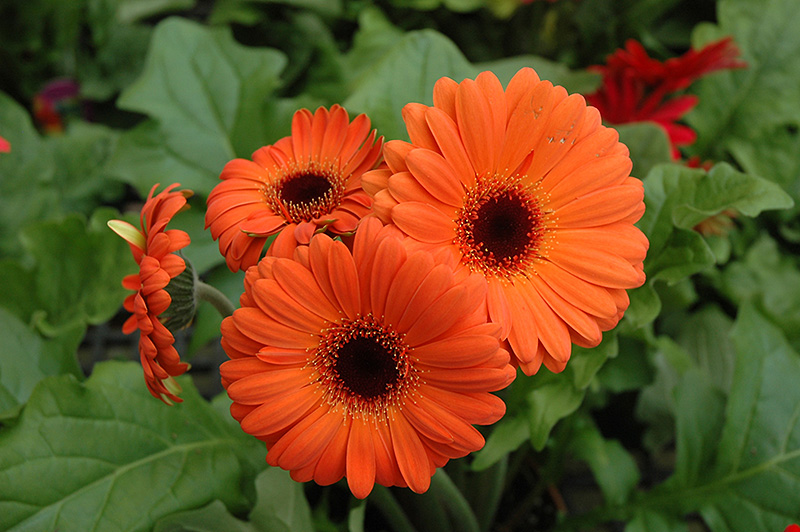Know Before You Go!
Get notified before our plants arrive in stores near you.
Plant Care Library
Plant Height: 12 inches
Flower Height: 16 inches
Spacing: 18 inches
Sunlight:
![]()
![]()
Other Names: Transvaal Daisy
Description:
Beautiful large, orange daisies with burgundy centers rise above bright green foliage on this upright variety; perfect for garden beds, borders and containers; excellent addition to cut-flower arrangements; adaptable as a houseplant
Features & Attributes
Orange Gerbera Daisy features bold semi-double orange daisy flowers with burgundy eyes at the ends of the stems from early summer to mid fall. The flowers are excellent for cutting. Its tomentose oval leaves remain bluish-green in color throughout the year.
This is an herbaceous houseplant with an upright spreading habit of growth. You may trim off the flower heads after they fade and die to encourage releat blooming.
Planting & Growing
When grown indoors, Orange Gerbera Daisy can be expected to grow to be about 12 inches tall at maturity extending to 16 inches tall with the flowers, with a spread of 12 inches. It grows at a fast rate, and under ideal conditions can be expected to live for approximately 3 years. This houseplant will do well in a location that gets either direct or indirect sunlight, although it will usually require a more brightly-lit environment than what artificial indoor lighting alone can provide. It does best in average to evenly moist soil, but will not tolerate standing water. The surface of the soil shouldn't be allowed to dry out completely, and so you should expect to water this plant once and possibly even twice each week. Be aware that your particular watering schedule may vary depending on its location in the room, the pot size, plant size and other conditions; if in doubt, ask one of our experts in the store for advice. It is not particular as to soil type or pH; an average potting soil should work just fine.
There are many factors that will affect the ultimate height, spread and overall performance of a plant when grown indoors; among them, the size of the pot it's growing in, the amount of light it receives, watering frequency, the pruning regimen and repotting schedule. Use the information described here as a guideline only; individual performance can and will vary. Please contact the store to speak with one of our experts if you are interested in further details concerning recommendations on pot size, watering, pruning, repotting, etc.
-- THIS IS A HOUSEPLANT AND IS NOT MEANT TO SURVIVE THE WINTER OUTDOORS IN OUR CLIMATE --
A NetPS Plant Finder tool

